Why Is My Washer Leaking? 12 Likely Reasons
-
Pete Ortiz
- Last updated:
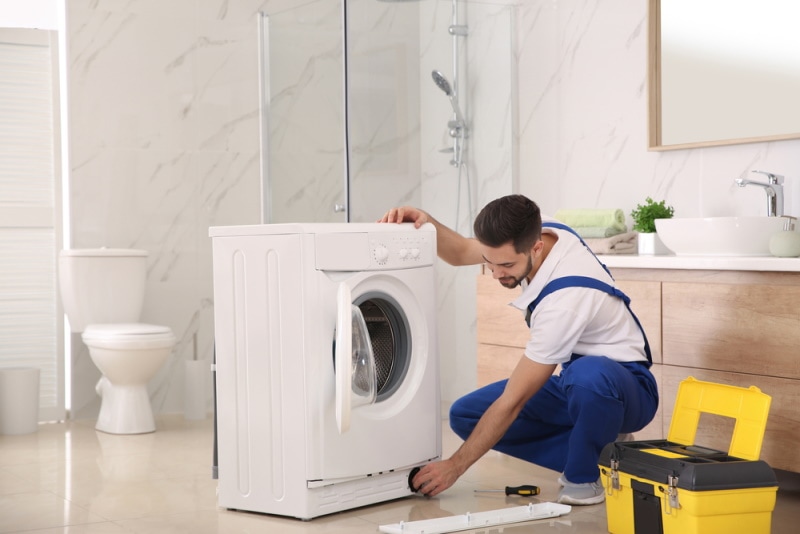
In this day and age, it’s impossible to imagine our lives without washers. Instead of having to clean every single piece of clothing manually, we just throw them into washing machines, and they do all the heavy lifting. These home appliances come at a reasonable price, have a decent lifespan, and are very easy to operate. They do break down eventually, though.
Hands down, one of the biggest issues with washers is when they start leaking. If you’re not quick to contain the problem, you’ll end up with quite a mess on your hands. So, why do these machines leak in the first place? What are the most common reasons for this? More importantly, what can you do to fix that? Let’s find out!
Before We Begin
Before you do any “investigative work”, you need to shut the machine down. First, set it to “off” using the knobs/buttons on the panel. Next, see that the water valves are all turned off. Finally, unplug the device from the outlet. This is done as a safety measure against short circuits (electricity and water don’t go well with each other) and flooding.
Also, put on a pair of protective, water-resistant gloves and some old clothes that you’re not afraid to get wet or dirty. Finally, make sure the washer is leveled (it sits evenly on all four legs); the same is true for the floor. This way, it will be easier to figure out where the leaks are coming from.
The 12 Likely Reasons Why Your Washer Leaking
1. The Drain Hose Is Punctured/Loose
This is the most common (yet easy to fix) problem with any washing machine. Check the back of the washer: is the floor wet? That means the hoses are responsible for that. If a hose is loose, hard-tighten it. Also, see that the rubber washers are in place. While they might be a bit tricky to use, without the washers, you won’t get a proper seal.
But what if the hose is in prime condition, yet it’s leaking? Most likely, you’re dealing with a punctured hose. To diagnose it properly, disconnect the hose and look for any signs of wear, tearing, and cracks. Hoses are cheap, so just replace them and call them a day. Still can’t seem to get rid of the leaks? Then the drain pipe is clogged, and cleaning it should fix the problem.
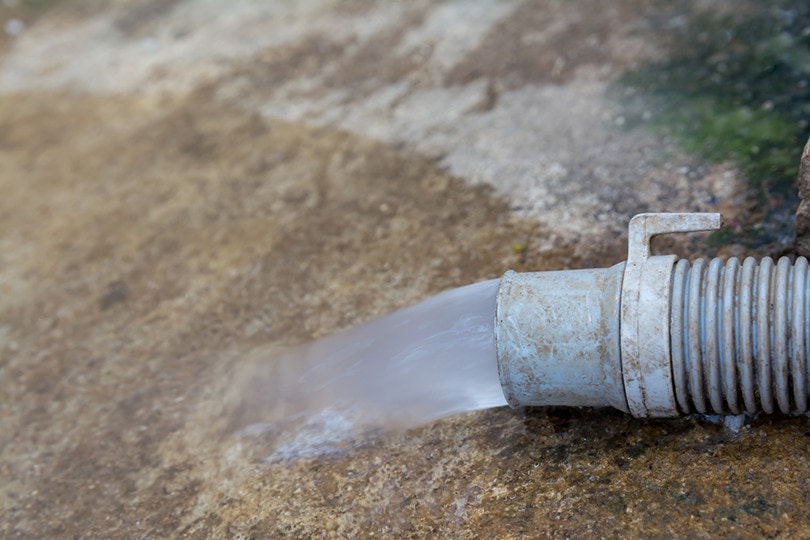
2. The Drain Plug Is Still On
Did you know that many top-loading machines come with a drain plug? Yes, and it does get in the way. Remove the drain hose, and you’ll see the plug “resting” inside of the washer. If it’s been there for a while, prepare a big bucket and some towels to capture all the water that will flow right out once you get rid of the plug.
3. The Tub Seal/Gasket Is Broken
Top-load machines have seals at the bottom of the tub; front-loaders have a pair: the first seal is found inside the tub and the other one circles around it. These seals are quite hard to get your hands on, though. The reason: you will have to decompile the better half of the washer to reach them.
So, unless you’re on a budget or know what you’re doing, it’s recommended to hire an expert to handle this. Oh, and seals and gaskets are NOT the same. On front-loading devices, these rubber parts are wrapped around the door for a tight seal. Without them, the drum won’t be able to contain the water!
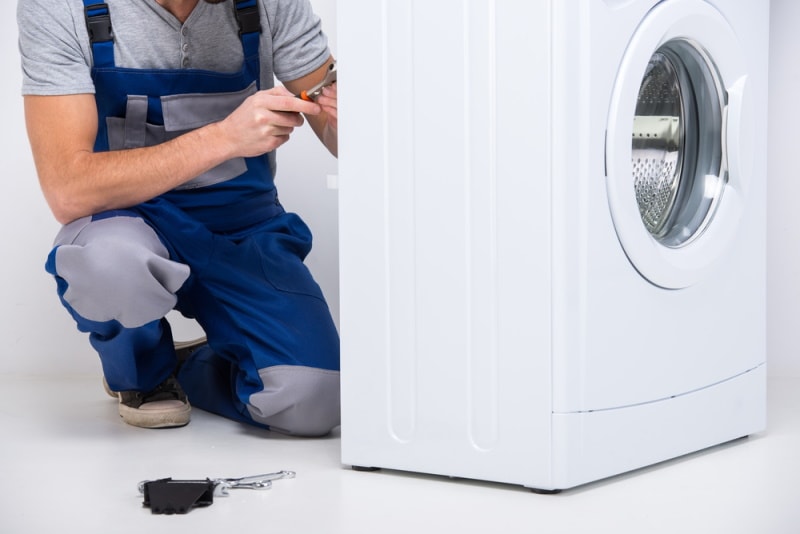
4. The Water Pump Is Faulty
If you just noticed a tiny puddle of water underneath a top-loading washer, most likely, it’s the water pump’s fault. When it develops cracks, the water flowing through the pump hits the engine, causing trouble. That’s why you need to replace it ASAP. The water pump has one job: to push water from the wash tub into the drain hose.
It’s one of the most important components in any washing machine. Replacing it manually will cost $10–30. You’ll find it sitting at the bottom of the washer—it shouldn’t be hard to locate. Once you install the new pump, it will greatly increase the reliability and lifespan of the device.
5. The Detergent Dispenser Is Blocked
Essentially, what a dispenser does is it “feeds” the drum with just the right amount of cleaning product, eliminating the chance of your laundry getting too much (might damage the fabric) or too little of it (you’ll be forced to start the cycle again). There is one minor downside, though: dispensers get clogged with residue.
As you’ve probably guessed, that makes the machine leak. Suds—soap bubbles—can also cause this, along with cracks in the dispenser. Next, check the hose and the bellows on the door to make sure that’s not the issue here. Finally, sometimes, a tiny piece of clothing can get in the way of the water flow between the dispenser and the drum, causing a leak.
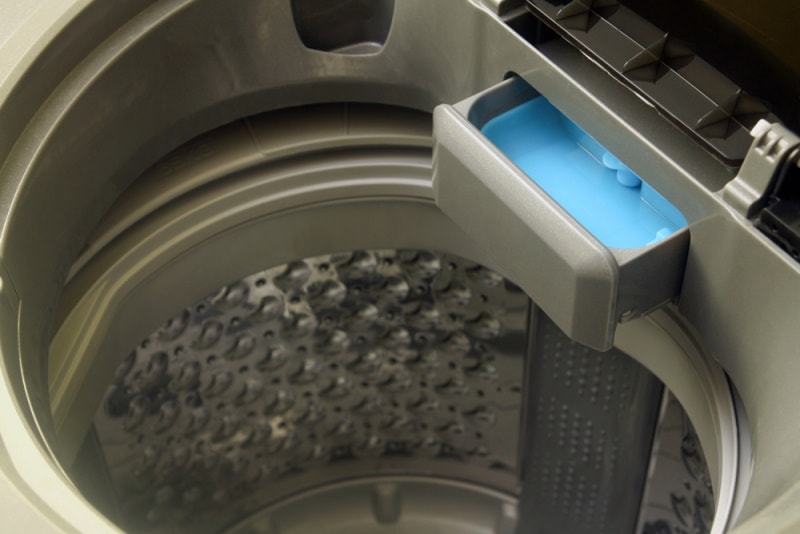
6. The Overflow Tube Is to Blame
Top-loading washers rarely leak from the front, but when that happens, you’re dealing with a malfunctioning overflow tube. Much like the dispenser, the tube tends to get overwhelmed with suds. This is a big problem in households with an installed water softener. These systems do a great job of purifying the water.
However, you need to be careful not to add too much detergent to the washer. With a water softener, washing machines need less of it to adequately clean dirty clothes. Also, be very careful when mixing different cleaning products, as that can have a negative effect on the overflow tube.
7. The Water Inlet Valve Is Leaking
How does a washer control the water (both hot and cold) flowing into the drum? It does that through the inlet valve, of course. Unfortunately, this valve tends to leak when there are tiny cracks in the body or just a worn-out/faulty seal. In other cases, it gets clogged with dirt and debris. To inspect the valve, you’ll need to first unscrew the access panel.
You’ll find it right where the inlet hoses connect to the washing machine. Replacing it won’t take much effort, nor will it cost a fortune. On average, new units are available for $20–40 or even cheaper. Alternatively, there’s always the option of cleaning the inlet valve—that will stop the leaks as well.
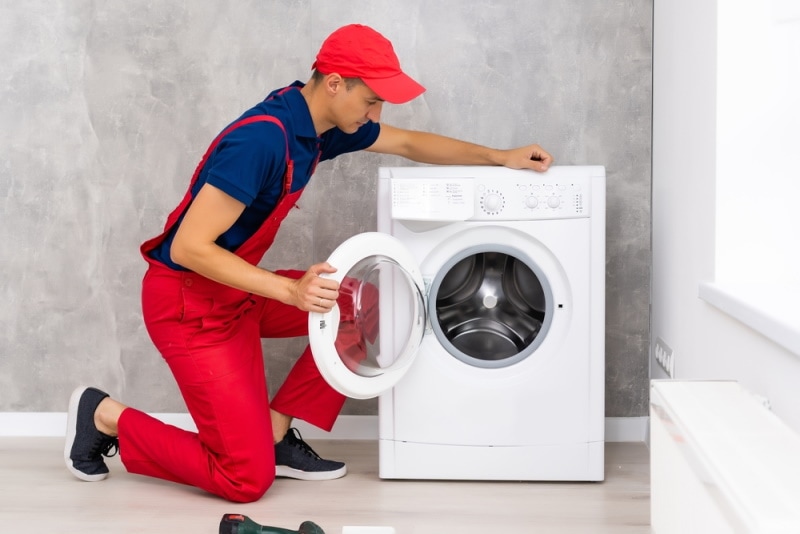
8. The Spray Rinse Timers Are Faulty
Are you the proud owner of a tech-packed, top-loading washing machine? Then it probably allows setting spray rinse timers manually. While this is a nifty feature, oftentimes, it doesn’t work properly. That’s right: if you interfere with the default cycle, that might lead to leaks. The reason: by extending the rinsing cycle, you’ll make the washer overflow and, eventually, leak all over the floor.
The solution here is rather simple. Just set the machine to default settings, and it will reset the spray rinse timers.
9. The Door Is Misaligned
Can’t seem to figure out why the front-loading washer is leaking? It might be that the door is misaligned. This mostly has to do with loose hinges. What you can do is remove them, readjust the door, and put the hinges back in. If you see that the hinges are a bit worn-out or rusty, do consider replacing them.
On average, a brand-new pack costs $20–25. However, depending on the washer model, the hinges could set you back $70–80. Still, it will be money well spent. Also, before you put all the blame on the hinges, try to level the machine. Move it around a bit or put something underneath one of its legs (like a piece of cardboard). That might just do it!

10. The Drum Seams Are Leaking
In contrast to top-loaders, front-loading washers have two drums: outer and inner. On top of that, the outer drum is not monolithic, meaning it’s made up of two separate parts, secured with a set of seams. Unfortunately, these seams lose their efficiency over time and cause water leaks. Now, since they don’t cost much, we recommend opting for a new set instead of repairing the old one.
11. The Machine Is Overloaded
Most top-load washers won’t let you put more dirty clothes into the drum than it can handle. You’ll get a warning sign (or a beeping noise) signaling that the load is too big. However, this feature isn’t present on some cheaper or older models. Therefore, when the device is overloaded, it might start to leak. So, how do you figure out the washer’s loading capacity?
There is a very accurate and simple formula for that: Volume in cubic feet = r times r times pi times D. R is the radius (in feet), p equals 3.14, and D is the depth of the washer (again, in feet). And here’s a quick look at common washer sizes and capacities:
| Washer Type | Size Capacity | Load Size |
| Compact | 5 – 3.4 cu. ft. | 4 – 8 pounds |
| Regular | 5 – 4.4 cu. ft. | 10 – 16 pounds |
| Large | 5 – 5.0 cu. ft. | 16 – 20 pounds |
| Extra-large | 1 – 6.2 cu. ft. | 18 – 26 pounds |

12. You’ve Got a Clogged Catch Basket
Just like the link trap in a dryer, the catch basket in a washer has one very important job: to accumulate all the tiny fibers released by clothes in the drum. When it gets clogged (and that will happen eventually), you’ll start seeing fibers mixed up with the washed clothes, which can be quite frustrating. If you don’t do anything about that, it will lead to leaks from the bottom of the machine.
The good news is that it’s very easy to clean the basket (warm water and a soft brush will do). On a front-loading washer, you’ll find it along the top corners of the drum. Top-loading units, in turn, have the trap installed in the agitator. Or, it could be hidden in the back, right where the water pump is. A quick note: newer washing machines don’t have a basket/trap at all. Instead, they rely on pump filters to handle the lint.
How Long Do Washing Machines Last?
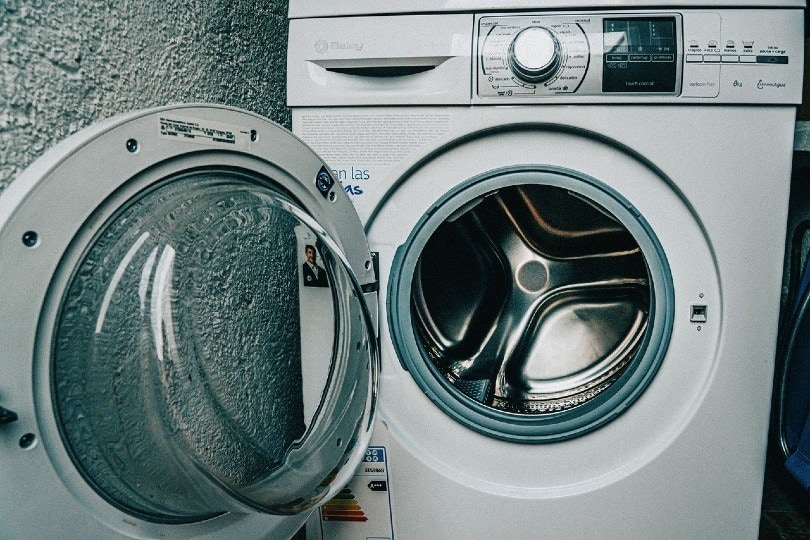
The average lifespan for a washer is 10–15 years or 5K loads of laundry. A premium-quality machine may last for up to 20 years, but you will have to pay extra for it. Now, if you only use it once a month, the washer will serve for much longer. But, since most of us use it at least twice a week, these estimates are pretty accurate. So, how do you know a replacement is in order? Watch out for the signs!
The most common side effects of a faulty washing machine are loud, banging noises, a strange odor, poor performance (like the drum refusing to spin), and, of course, leaks. Also, if the drum can’t seem to drain/fill up properly, the washer is shaking a lot while working, and the utility bill is way higher than it should be, that also means a replacement is in order.
Is a Leaking Washer Worth Repairing?
The short answer is yes, it is worth the trouble. Most leaks in the washing machine don’t take a science degree to fix. In general, it all comes down to replacing the hoses, drains, gaskets, or some other cheap and easy-to-install parts. Now, according to the experts, if the repairs cost 50% less than a brand-new washer machine, fixing it will be a reasonable move.
But this is only true if your machine is expected to serve for at least 3–5 years before it breaks down (reaches the end of its expected lifespan). Otherwise, you’ll be spending money on an appliance that won’t have enough time to pay for itself. In that case, you should probably save a bit and buy a brand-new model.
How Much Do Pro Services Charge to Fix It?
Washing machines can be expensive and the cost of fixing one largely depends on the nature of the problem. If the servicemen only have to do minor repairs, that will cost as little as $80–100. Repairing the inlet valve will set you back $100–200; the price for a gasket replacement, in turn, is $200–300. The average repair cost ranges from $100 to $400 (but can reach $600).
Most companies charge $50–150 per hour and usually get the job done in 2–3 hours. The brand, make, and type of the washer (top-loading, front-loading, combined, or stacked) will have an impact on the price as well. So, before you sign a contract, make sure you’ve agreed upon the price to avoid confusion.
Conclusion
A leaking washing machine is no small matter. While it won’t ruin your entire house, when left untreated, this can, indeed, lead to undesired consequences. It’s safe to say that the sooner you find the leak, the less effort (and money) it will take to fix it. The bad news is—there isn’t one single cause of leaks in a washer.
The list of “potential suspects” is large. On the bright side, if you follow our tips and tricks from today’s guide, it shouldn’t be hard to find the faulty part(s). And one more thing: don’t underestimate the importance of maintenance. Take proper care of the washing machine, and it will last for decades!
- DurabilityMatters – How Long Should A Washing Machine Last
- Should You Repair or Replace a Broken Washing Machine?
- How Much Does Washing Machine Repair Cost?
- 6 Signs You Need Washing Machine Repair
- Washing Machine Capacity and Load Size Guide
- Washing Machine Load Size: An Easy Reference Chart
- MNDepartmentOfHealth – Home Water Softening
- Cleaning Your Washing Machine’s Lint Trap
- OhSoSpotless – Why Is My Washer Leaking?
- How to Fix a Washer Leaking from the Bottom
- Why Is My Washing Machine Leaking? Causes and Fixes
Featured Image Credit: New Africa, Shutterstock
Contents




